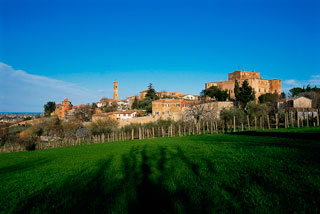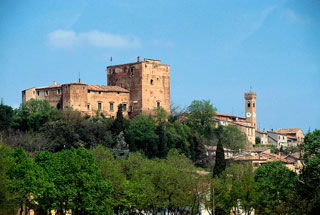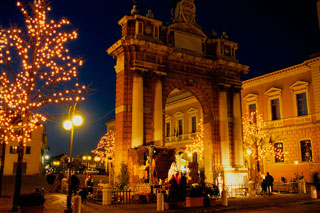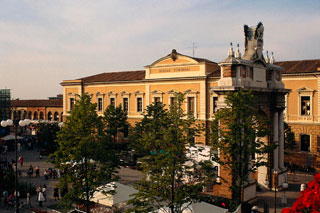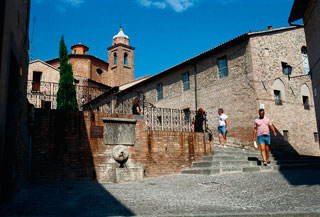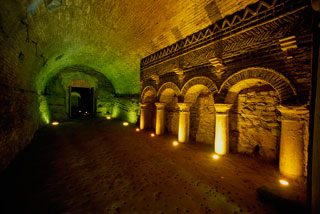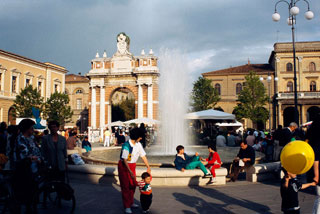Santarcangelo is a beautiful, lively and picturesque town that was formed after settlement of the Roman colony at Rimini, although there is evidence humans settled here way back in prehistoric times. Its position near the coast and along the old Via Emilia on one side and, on the other side, the old Via Aretina (which coincides more or less with the current Marecchiese), helped in its development, as did the fertility of the land which resulted in flourishing farming and commercial activities, establishing the centrality of Santarcangelo in the area. The first inhabited centre of the Roman times was concentrated around the area where the Parish church of San Michele Arcangelo still stands, but was then moved to Colle Giove. After many vicissitudes associated with rule of the area, Santarcangelo was eventually controlled by the Malatesta under whose rule it enjoyed a long period of prosperity. After Napoleonic rule, Santarcangelo then remained under the aegis of the Papal State until the unification of Italy. The town experienced further growth between the 18th and 19th centuries, with the growth in its importance and urbanisation going hand in hand to form the town as it is today. It has one of the most extensive and interesting historical centres in the area of Rimini. The history of the town can be seen in the many grand buildings on the streets of the centre which you can see while out on a walk, like the Cappella Zampeschi, an old sixteenth century church of which remains only the façade due to damage sustained during the last war, or the Pescheria where a fish market is held every day; this dates back to the 19th century and still has the original cast iron gates and stone benches of San Marino. Also worth a mention are the curious labels that illustrate the products sold in the small shops below; this is an original way of publicising wares for people who cannot read. The people of Santarcangelo also demonstrate their love of fun with the events and festivals which they hold each year, like the Fuochi di San Giuseppe (The Fires of St Joseph) in March, the Sagra di San Martino (The Festival of St Martin) in November, and the Santarcangelo dei Teatri (The Santarcangelo of the Theatres) a festival of contemporary theatre that is now known worldwide.
Show on map Take me there
|
|




